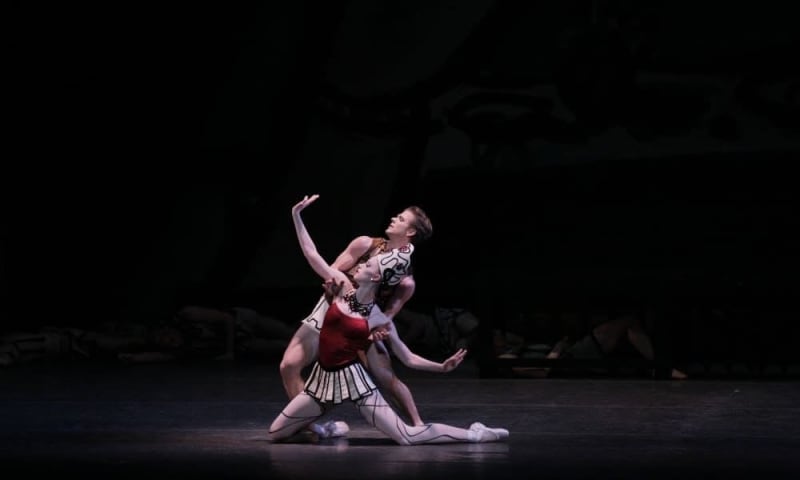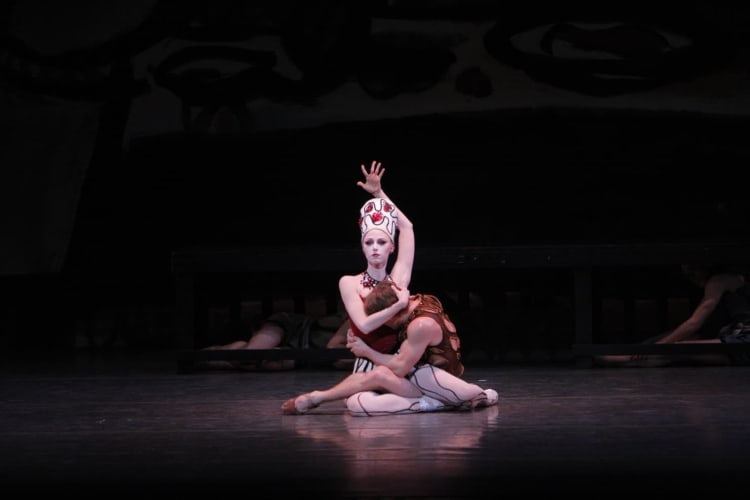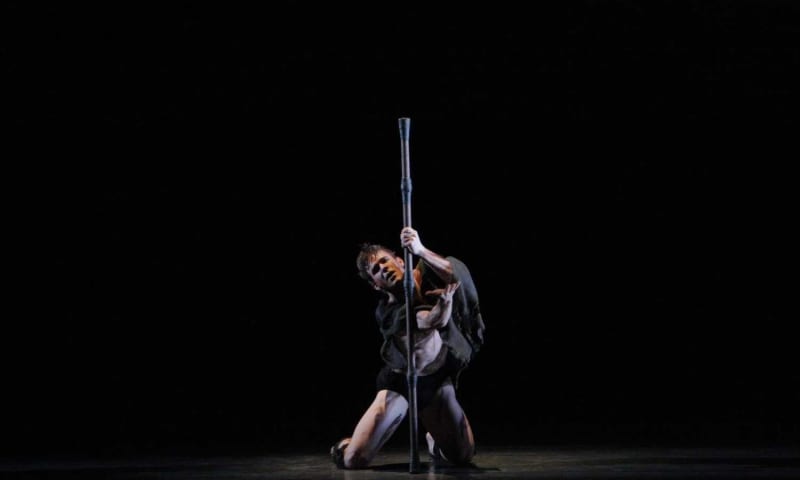Prodigal Son, a biblical parable of sin and redemption, has inspired so many artists and musicians—amongst them Bosch, Durer, Rembrandt, Tissot, Debussy, Sullivan and Britten.
George Balanchine created his one-act, 35-minute ballet version to music by Sergei Prokofiev when he was 25 years old. Diaghilev’s Ballets Russes premièred it in Paris in 1929. Serge Lifar had the leading role. The Fauvist designs were by Georges Rouault.
The London première divided the critics, many of them dismissing it as eccentric buffoonery and finding its canine contortions grotesque. 90 years on, it comes across as very much a 1920s idea of Biblical drama. Naïve, camp, definitely suggestive, it is interesting precisely because it is a period piece and yet feels modern. Balanchine’s vigorously sharp choreography is amusing and inventive.
The New York City Ballet was founded by Balanchine and Prodigal Son has been in their repertoire since 1950. The performance now online was filmed in 2013.
Daniel Ulbricht is the headstrong, acrobatic prodigal.
The ballet is divided into three sections: departure, dissipation, and return. There is no righteous brother, no dining on swine swill and no fatted calf. The riotous life is conveyed by one siren (Teresa Reichlein) and her entourage. The long-legged seductress, who towers above Ulbricht, is sensuously very precise. She does a lot of amazing things with her crimson train; and she also deliberately sits on the prodigal’s member.
A horde of skull-capped revellers have a gay time with him: they play with him, grope him, cradle him and strip him naked, leaving him with only a loin cloth. They are described in the cast list as his drinking companions. NYCB think of them as goons.
The last episode is all in mime. Haggard, dirty and in rags, the prodigal drags himself across the stage with the aid of a stick. His father lets him crawl all the way. Only when he has climbed into his arms does he finally enfold him in his cloak. Balanchine always said that it was Lifar on his knees that made the ballet.
Theatregoers may be interested to know that the biblical parable has also inspired a delightfully witty and cynical Edwardian comedy by St John Hankin which premièred in 1905 and has had no West End production since 1948. It is called The Return of the Prodigal and is long overdue for revival.


